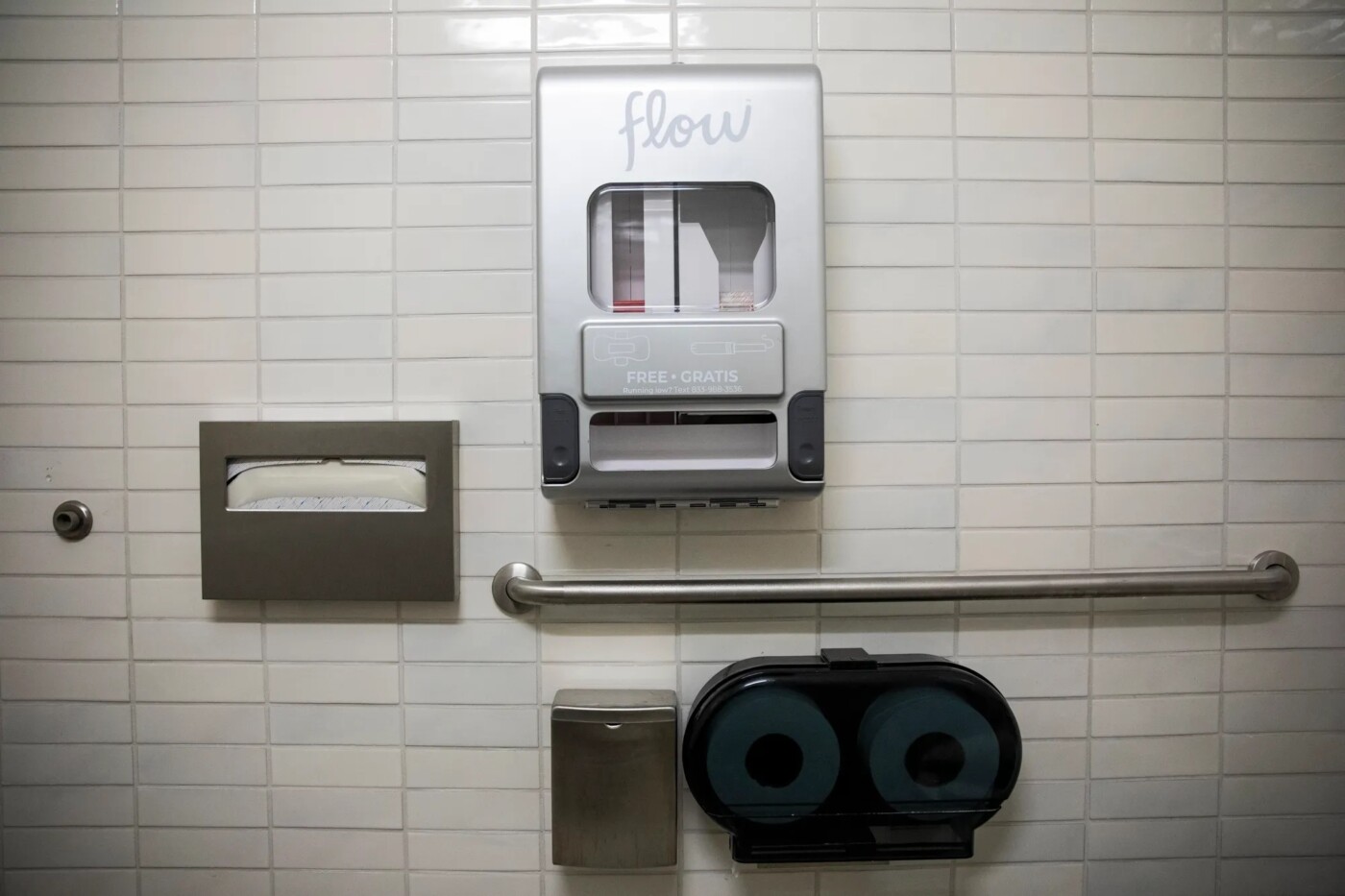A year and a half ago, California passed a law requiring public colleges to provide free menstrual products to students. It’s the first such law in the nation, and campuses are required to be compliant by this school year.
Have colleges actually followed through?
That’s what Airin Valdez, a sophomore at Stanford University, asked in response to the CalMatters College Journalism Network’s call for readers’ questions about college in California.
As a high schooler, Valdez founded Period Project Los Angeles — a student-run organization that distributes free tampons and pads in her hometown of Los Angeles. Now she organizes menstrual product giveaways at Stanford for students who can’t afford them.
California’s new law doesn’t apply to private colleges, but Valdez said she has heard mixed reports from students at public colleges who noted that even when dispensers are on campus, they are often empty.
“Even with legislation and all these changes, nobody is really enacting the change needed and no one is really supervising and checking that these laws are being met,” Valdez said. “So I think that kind of keeps hurting students who need this the most and also keeps period poverty going.”
A 2021 study published in the journal BMC Women’s Health found that about 14% of female college students had experienced period poverty – not being able to afford the menstrual products they need – in the past year. Low-income students and students of color are disproportionately impacted by period poverty, a study conducted by the advocacy group PERIOD and period products maker Thinx found, with about half reporting that their lack of access to menstrual products affects their ability to perform their best at school.
“Toilet paper should be equated to period products. They are essentially kind of one and the same in the sense that you can’t not have them,” said Amanda Safi, a junior at UC Santa Cruz who works on menstrual equity campaigns. “They are essential to these necessary biological processes.”
The new law, known as the Menstrual Equity for All Act of 2021, requires all campuses to have menstrual products available in at least one central location. California State University and the California Community Colleges told CalMatters they don’t ask campuses to report whether they’ve complied with the law, though the community college chancellor’s office said it supports the requirement and a Cal State spokesperson said that “anecdotally, campuses have shared that implementation is going well and either completed or close to being completed.” A spokesperson for the University of California said all campuses had complied.
When College Journalism Network fellows checked in person at several community colleges and spoke with students at others, we found that the availability of products varied from campus to campus.
Diablo Valley College in the San Francisco Bay Area, for example, stocks free menstrual products, including pads and tampons, at 10 locations on campus. All four public-access women’s restrooms our reporter checked had products readily available along with a poster listing other locations where they could be found.
At East Los Angeles College, on the other hand, the menstrual product dispenser in the women’s restroom a CJN fellow visited was empty. And at nearby Cerritos College, there were no dispensers in the gym bathroom we checked, and no signage indicating where students can find menstrual products.
Some colleges are going beyond what the law requires: San Diego Community College District spokesperson Joel Peterson said the district is currently 90% complete in providing free menstrual products in every female and gender-neutral restroom on their campuses.
“We don’t charge for toilet paper, so why would we charge for menstrual products?” Peterson said. “Menstrual equity is common sense, common courtesy, and simply common humanity.”
For Cal State San Bernardino, the new law prompted administrators to reassess the free dispensers already on their campus. “It was determined that some dispensers were not working properly or needed to be stocked more frequently so we worked with campus partners to remedy these issues,” spokesperson Joe Gutierrez said.
At other colleges, it’s been slow going. Kaia Susman is the president of Santa Monica College’s PERIOD chapter, where she is helping lead efforts to implement the law on campus. The school installed its first set of menstrual product dispensers in March 2022.
Now, over one year later, it has installed dispensers in just two of its seven campuses, meaning that the college is not fully in compliance with the law, Susman said. The college plans to have dispensers on all campuses by mid-summer.
“When I first got into this, I was like ‘Oh, we’re going to get this done in a couple months and it’s just going to be good,’” Susman said. “But, here we are over a year later, and we’re still not in compliance.”
Advocates say California’s law is not just about getting tampons and pads in restrooms, but creating a “period positive” culture in which people are comfortable talking about menstruation and know that period poverty is a problem. The law’s implementation has proven difficult primarily because it requires a “cultural shift in that schools and that usually takes years to implement,” said Damaris Pereda, PERIOD’s national programs director. “I mean, we’re talking about addressing a basic need that people have been embarrassed to talk about for so long.”

A few other bills pending in the Legislature also take aim at that goal. AB 230, known as The Girls Scouts Period Equity Act, would require schools that serve grades three to five also provide free menstrual products (the current law already covers grades six to 12.). Another bill authored by state Sen. Nancy Skinner would require all state-owned buildings to provide menstrual products in every women’s and gender-neutral bathroom, plus at least one men’s restroom. A third would allow low-income families to use cash benefits from the state’s CalWORKS program to pay for tampons and pads.
On Valdez’s own campus, Stanford, dispensers are available at various restrooms across campus, but typically cost 25 cents and, Valdez said, are often empty. Valdez’s organization has distributed about 160 kits to students containing pads of various sizes, tampons, liners, hand sanitizer, wipes, and facemasks.
“Stanford is a very well-funded and resourced school,” Valdez said. Yet students still “lack and need access to these essential products.”
Stanford spokesperson Bridget Ballesteros said the university has increased the number of free dispensers by 20% since 2022 and is tackling a menstrual equity project that will ultimately make products free in all women’s and gender-neutral restrooms.
“I think it really goes back to not only demanding the bare minimum but really demanding what we need as menstruators,” Valdez said.
Luna is a fellow with the CalMatters College Journalism Network, a collaboration between CalMatters and student journalists from across California. Network fellows Carmen González and Andrea Madison, and program manager Matthew Reagan, contributed reporting. This story and other higher education coverage are supported by the College Futures Foundation.
